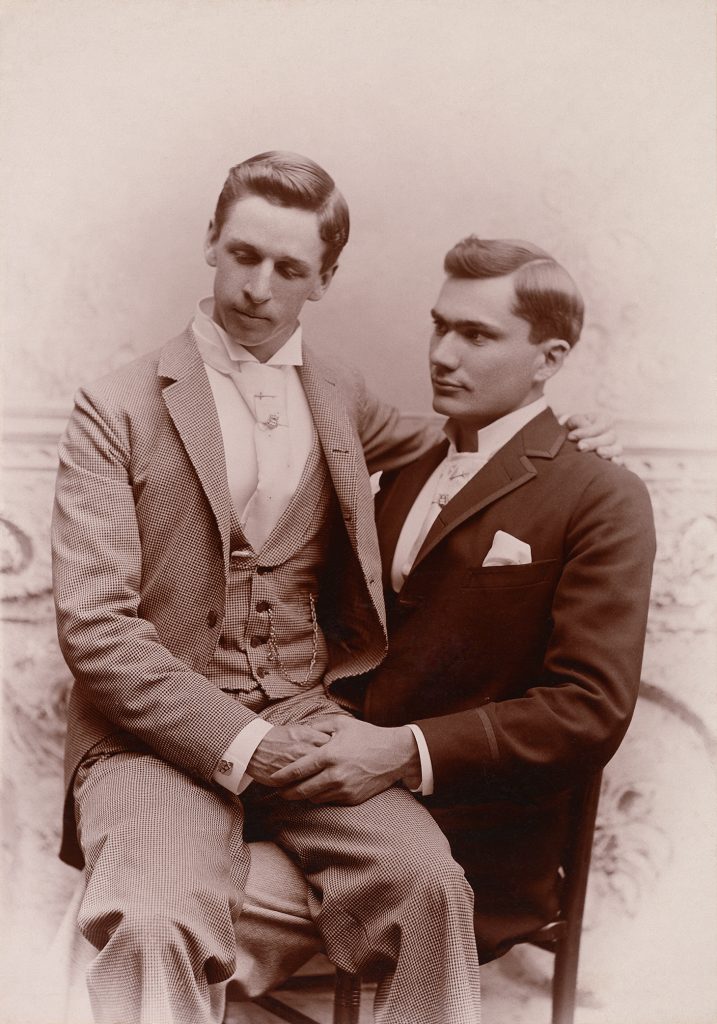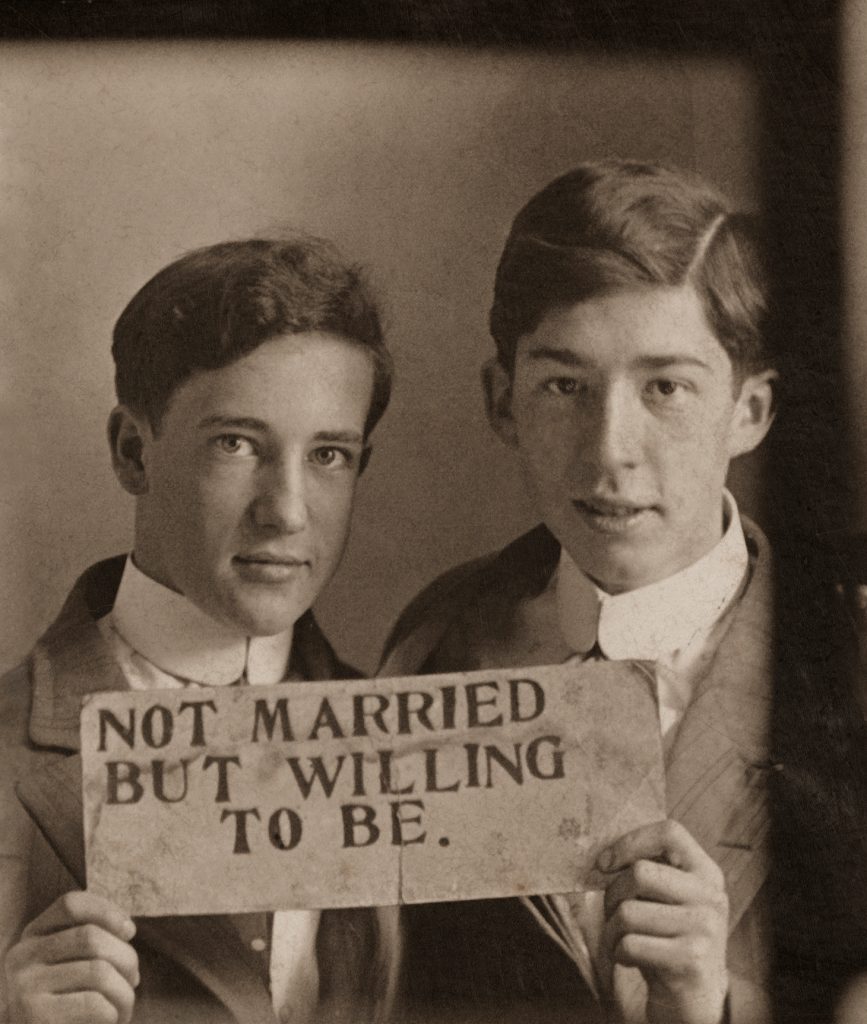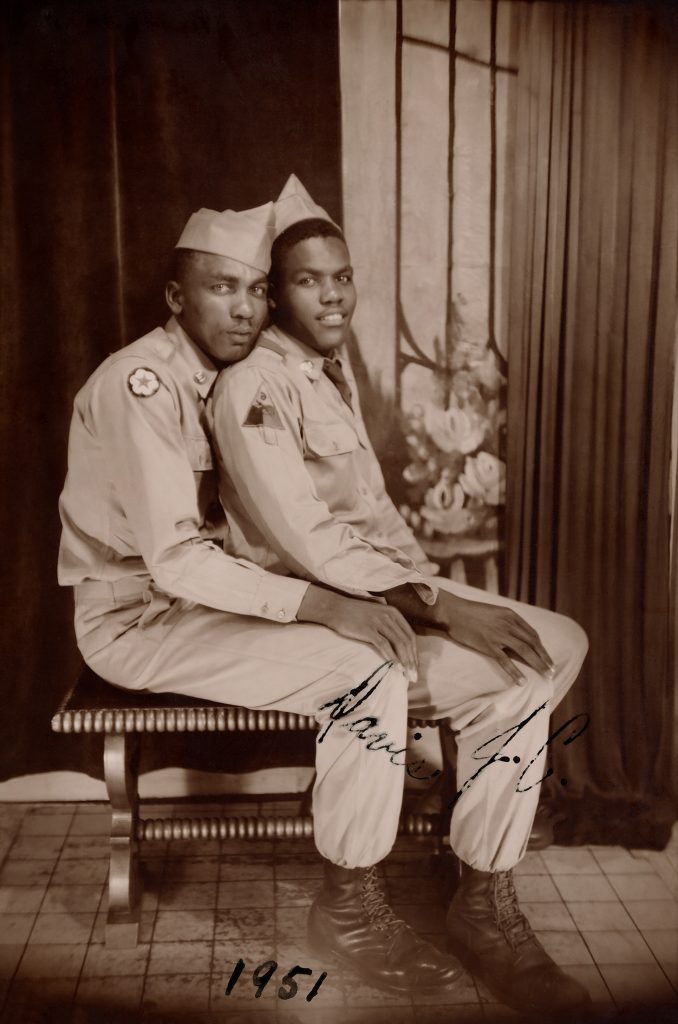TBT: Super Awesome People™ in History.
In the United States*, it is a scary time to be in the LGBTQ+ community. Although advances in LGBTQ+ rights were made during the Obama administration, including the SCOTUS rulings United States v. Windsor (2013) and Obergefell v. Hodges (2015), the Trump administration has been incredibly hostile to LGBTQ+ people, banning transgender service members and rolling back Obama-era non-discrimination protections.
With the confirmation of Amy Coney Barrett to SCOTUS and Justices Clarence Thomas and Samuel Alito’s recent attack on the Obergefell v. Hodges ruling (which legalized same-sex marriage throughout the U.S.), the possibility that LGBTQ+ people may lose the rights they’ve gained under the law is very real—and very terrifying. It was as recent at 2003 that sodomy laws were ruled unconstitutional, and as far as we’ve come in the past few decades, human rights (for many people) are still under attack and at risk of being revoked.

Cabinet card, circa 1880
(Nini-Treadwell Collection “Loving”)
Photo strip, undated
(Nini-Treadwell Collection “Loving”)
Photograph, 1951
(Nini-Treadwell Collection “Loving”)
Now, more than ever, it is important to celebrate the LGBTQ+ community and work as allies to protect our fellow humans from unjust discrimination. One beautiful way to do that is by celebrating the love that has always existed between people, regardless of their gender or sexual identity.
A new book by Hugh Nini and Neal Treadwell spans a century (1850s-1950s) of found photographs and offers a visual glimpse of the love between men during a century when homosexual relationships were closeted and criminalized. The photos in Loving: A Photographic History of Men in Love 1850s-1950s were found in flea markets, family archives, shoe boxes, and online auctions. In many cases the subjects are not known, but the intimacy and love they share—captured in ambrotypes, glass negatives, photo strips, snapshots, and more—is undeniable. People are people, and people in love deserve the same rights as everyone else, no matter where they fall on the spectrum of human identity.
Loving: A Photographic History of Men in Love 1850s-1950s (buy on Bookshop.org)
Loving: A Photographic History of Men in Love, 1850-1950 portrays the history of romantic love between men in hundreds of moving and tender vernacular photographs taken between the years 1850 and 1950. This visual narrative of astonishing sensitivity brings to light an until-now-unpublished collection of hundreds of snapshots, portraits, and group photos taken in the most varied of contexts, both private and public. Taken when male partnerships were often illegal, the photos here were found at flea markets, in shoe boxes, family archives, old suitcases, and later online and at auctions. The collection now includes photos from all over the world: Australia, Bulgaria, Canada, Croatia, France, Germany, Japan, Greece, Latvia, the United States, the United Kingdom, Russia, and Serbia. The subjects were identified as couples by that unmistakable look in the eyes of two people in love—impossible to manufacture or hide. They were also recognized by body language—evidence as subtle as one hand barely grazing another—and by inscriptions, often coded. Included here are ambrotypes, daguerreotypes, glass negatives, tin types, cabinet cards, photo postcards, photo strips, photomatics, and snapshots—over 100 years of social history and the development of photography. ...Loving, the book, will be up to the measure of its message in every way. In these delight-filled pages, couples in love tell their own story for the first time at a time when joy and hope—indeed, human connectivity—are crucial lifelines to our better selves. Universal in reach and overwhelming in impact, Loving speaks to our spirit and resilience, our capacity for bliss, and our longing for the shared truths of love.
*Of course, even in the 21st century, it is more difficult and dangerous to be LGBTQ+in parts of the world where discrimination and criminalization are rampant. For a deeper understanding of LGBTQ+ rights around the world, read the Williams Institute’s Social Acceptance of LGBT People in 174 Countries, the World Economic Forum’s This Is the State of LGBTI Rights Around the World in 2018, and the Human Rights Watch’s LGBT Rights.